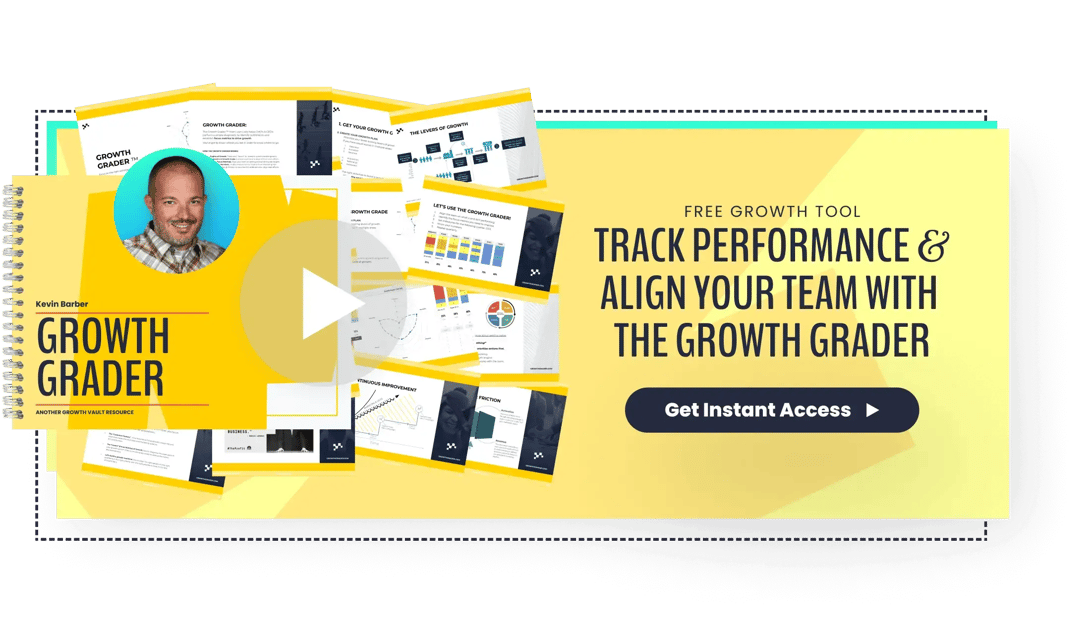Do you feel like you’ve tried everything regarding customer acquisition? Are you at your wit’s—and budget’s—end? Profitable customer acquisition can feel like a puzzle with no solution. However, when you set your systems up correctly, you can 10X your traffic and revenue and grow your business—without tearing your hair out.
In this post, we'll explore the ins and outs of digital customer acquisition and provide ten tips to help you increase leads and revenue for your business. In addition, we’ll provide an actionable idea for each tip you can implement today.
Digital customer acquisition differs from traditional methods of acquisition, mainly through channels. In addition, this approach offers many online options, such as social media, search engines, email, mobile, blog content, and more.
As increasingly more customers and businesses move to online channels to research, shop, and sell products and services, it’s more vital than ever for companies to crush their digital customer acquisition strategies. If you want to stay competitive in today’s market, you need to attract and engage potential customers where they’re spending most of their time—online.
Let’s look at ten tactics to 10X traffic and revenue in your business through digital customer acquisition.
VIDEO TRAINING
Get The Growth Marketing Playbook.
Learn to plan, budget, and accelerate growth with our exclusive video series. You’ll discover:
- The 5 phases of profitable growth
- 12 core assets all high-growth companies have
- Difference between mediocre marketing and meteoric campaigns
Thanks for submitting the form!
We'll review the information you've submitted and respond to you just as soon as possible.
1. Define Your Target Audience
Before you can attract new customers, you need to understand who you’re trying to attract in the first place. Who is your ideal customer? Next, you need to understand the ins and outs of the persona you’re selling to—not only demographics but also interests, pain points, and challenges.
You have many options for how to go about this tactic. One method to define your target audience is to conduct customer interviews.
Related Read: 5 Fundamentals of Inbound Marketing
Contact your existing customers and ask about their experiences with your product or service. Ask questions about their demographics, what problems your product or service solves, and what they like and dislike about your business. This information can help you better understand your target audience and tailor your marketing efforts accordingly.
Another option is to utilize social media. Track online conversations in your industry. What pain points or challenges is your audience discussing? What language are they using to describe those problems? This information is all valuable for crafting your marketing campaigns and copy.
2. Create Valuable Content
Think of content as the cornerstone of digital customer acquisition. You have many options for content, including blog posts, videos, podcasts, and social media posts.
The most crucial consideration in content creation is value. Is your content providing genuine value to your target customer? Consider common questions your customers might be asking about your industry or solution. How can you answer those questions in a human, helpful way that builds trust with your target audience?
Another unique idea regarding content creation is to leverage user-generated content. For example, use a giveaway or another incentive to encourage your customers to share their experiences with your product or service on social media, then repost and highlight these posts on your channels.
User-generated content provides valuable social proof and creates a sense of community around your brand, which can increase customer loyalty.
3. Use Social Media (Wisely)
Social media can be a time drain if misused, but there’s no denying that it is a powerful tool for engaging with potential customers. Use LinkedIn, Twitter, and Facebook platforms to connect with your target audience and promote your content.
Examine your target audience to establish where they hang out online. What channels are they spending time on? Where do they get trusted information, congregate, and discuss matters related to your solution? If the answer to this question is “LinkedIn,” don’t waste your time dancing on TikTok.
You can also leverage the power of social media by creating targeted social media ads. Use the audience targeting features on platforms like Facebook and LinkedIn to create ads that are highly relevant to your target audience. For example, you can create ads targeting people who have recently visited your website or engaged with your existing social media posts.
4. Combine Organic and Paid Efforts
Speaking of paid ads…
Paid advertising can be a highly effective way to drive traffic to your website or landing page. Experiment with platforms like Google Ads, Facebook Ads, and LinkedIn Ads to find the best fit for your business.
Related Read: B2B Lead Generation: Organic Search vs. Pay-per-Click
You shouldn’t rely on ads alone. As powerful as ads can be, they’re most effective when used with a killer organic marketing campaign. Identify your blog posts, lead magnets, or other content generating the most traffic and engagement and pushing the most conversions on your site. You can then create ads to drive potential customers to these pieces of content.
A campaign like this can help amplify the reach of already top-performing content, resulting in more clicks and conversions.
5. Optimize Your Website
In this digital age, your website is the face of your business. It’s likely your business’s top salesperson, and it’s the first impression potential customers have of your business. As a result, you need to ensure you optimize your site for the best possible user experience.
One great tip for optimizing your site is to use heat mapping tools. Tools like Crazy Egg or Hotjar can provide valuable insights into how visitors interact with your website. You can use this information to identify areas of your website that are causing confusion or frustration for visitors and then make changes to improve the user experience.
You also want to ensure you’re optimizing your site for load time. Remember: over half of the mobile users will abandon ship if your site takes longer than three seconds to load.
6. Explore Email Marketing
You may think email marketing is a dying art in this social media-driven age, but email is still a highly effective way to nurture leads and keep your business in mind. You can use your CRM tool to create and manage automated email campaigns to target segments of your contacts with targeted offers, helpful information, updates, and more.
One unique idea to explore email marketing is to use interactive email elements. Instead of sending static, text-based emails, use elements like GIFs, quizzes, or surveys to engage your audience and encourage them to take action.
Interactive emails can help increase open rates, click-through rates, and conversions, offering the reader a more engaging, personalized experience.
7. Implement a Chatbot
Chatbots have become increasingly popular in recent years, providing businesses with an efficient and cost-effective way to engage with customers in real time. However, implementing a chatbot isn’t as simple as downloading and launching a tool on your site.
Consider a few best practices for chatbot implementation:
- First, start simple: Begin with a basic chatbot that can answer common customer questions and direct them to the appropriate resources. Over time, you can add more complex features as needed.
- Personalize the experience: Use customer data to personalize the chatbot experience. For example, if a customer has previously purchased a specific product. Additionally, if your chatbot is integrated with your CRM tool, you can reduce customers' need to input information they’ve already provided to your company.
- Provide human assistance when needed: While chatbots can handle many customer inquiries, there will be times when a human touch is required. Nothing will turn a customer off more than making them continue to talk to the robot when that happens. Ensure your chatbot can easily escalate a conversation to a human representative.
8. Use Retargeting Efforts
Retargeting is a powerful technique that can help you reach customers who have already shown an interest in your business. You’ve already gotten the attention of this audience once—if you can recapture their attention, you might just be able to get them across the finish line this time.
You should always use segmentation when engaging in retargeting. Target your messaging based on these leads' actions on their website. For example, you can remind a lead about an offer they have already viewed or alert them that a product they previously expressed interest in now has new features or a reduced price.
Note: While retargeting can be effective, bombarding your audience with too many messages can fatigue or annoy your leads. Set frequency caps to ensure that your audience can handle your messaging.
9. Monitor Your Results
If you can’t measure something, you can’t improve it. This truism is why analyzing the results of your digital customer acquisition efforts is vital. Start by setting specific goals. What finish line do you hope to cross by engaging in these efforts? Set a moonshot goal while you’re at it! Who knows: You just might reach it.
You’ll want to use tools like Google Analytics or your CRM’s reporting features to track engagement, traffic, conversions, and other metrics. Don’t make decisions or changes to your campaigns based on your gut—trust the data and let it guide you.
10. Experiment and Iterate
Finally, don’t be afraid to pivot when the data calls for it! Experimentation and iteration are key to finding what works best for your business.
Here are some tips to help you experiment effectively:
- Start with a hypothesis: Before launching a new campaign, start with a hypothesis. What do you think will work best? Don’t let that hypothesis bias you when you check out the results, but starting with a goal and an expectation is good.
- Focus on one thing at a time: When you look at your data, you might see fifteen things you want to change and improve. Trying to take on everything at once can be tempting, but this can lead to confusion and inefficiency. So instead, focus on one thing at a time, making changes deliberately and systematically before moving on to the next.
- Learn from your failures: Not every experiment will succeed, which is okay. Don’t shy away from failure—and don’t make your team fear failure! Instead, use your failures as opportunities to learn and refine your approach for future campaigns.
Getting The Most From Your Digital Customer Acquisition Efforts
Digital customer acquisition is a highly effective way to attract new customers and grow your business in the digital age.
By defining your target audience, creating valuable content, using social media, and experimenting with different tactics, you can increase leads and revenue using digital customer acquisition methods.
The key is to stay focused on your goals, monitor your results, and be willing to experiment, course correct, and experiment again.
However, customer acquisition is only the beginning of your journey. If you really want to crush your growth goals, you need to find success at every stage in the sales funnel. Check out our free resource, the Growth Playbook, for more strategies and tactics to grow your business today.







